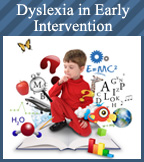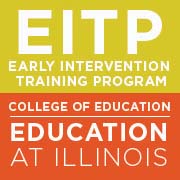Described more than a century ago, dyslexia is a deficit of language processing which affects one in five children in the United States, Designated as a neurodiversity, which means that the brain processes information differently to others which is likely due to atypical neurological circuitry between several areas of the brain relating to cognition, speech and memory, and resulting in suboptimal processing – hindering the phonological representation of phonemes and an impaired ability to convertgraphemes to phonemes, and other signs and symptoms of dyslexia, as well as the imperative role of the occupational therapist vis-a-vis fine motor & adaptive skills in the child with concomitant dysgraphia.
Many brain modalities and function must simultaneously execute phonics, phonemic and phonological awareness and pathway, phonologic decoding, word-analyzer, morphemes, graphemes, orthographic decoding, vocabulary, memory retrieval, cognition, comprehension, orthographic mapping, auditory and visual processing, and speech production – all in a precise and timed sequence so as to enable the miracle of reading.
More boys present with dyslexia only because boys are (1.5 times) more likely to get noticed when venting their frustrations by acting out, often leading to behavior disturbances and impacting on their psychosocial development. gifted with enhanced (right hemisphere) visual-spatial or artistic skills, may convey certain survival advantage in pre-literate societies. The actual prevalence of the disorder is nearly identical in the two genders, and those affected are often Dyslexic children often have lack of motivation, emotional or behavioral problems, and sensory impairment. The majority of children identified with dyslexia are between the ages of 11 and 17 years of age. Today, more than 3 million students in the United States cannot read – mostly due to dyslexia, which shows no racial preference, but tends to run in families, and has genetic influences.
Because the foundation for learned components of language – phonological, semantic and grammatical development, as well as and pragmatics – occur soon after birth, the opportunity for optimal development of these language components are an essential part of early intervention – even in a child under age three (3), particularly where higher risk, such as siblings with dyslexia or identified co-morbidities are present
Age-appropriate phonological development and the successful achievement of language milestones during the pre-linguistic and linguistic periods is an effective strategy to ward off off the likelihood of dyslexia, especially given the neuroplasticity of the young brain. Early detection, intervention and prevention – by way of phonemic awareness - serves as prophylaxis that precludes a language problem early enough to stave off the effects of a language problems and may promote neural pathways and synapses, neural processes and new circuitry between key brain modules, measured by objective improvement in reading ability. Early intervention speech therapy focusing on may help forge improved circuitry among these critical brain locales.
Learn about the signs & symptoms as well as management from the perspective of speech language pathology, occupational therapy and special education. Packed with visuals and diagrams, solutions to difficult and trouble-some scenarios are well presented, with a positive tone, and excellent ‘functionality’ of material for the early intervention professional.
Sign up now!

This program is offered for 0.55 ASHA CEU's (Level: Various Content Code: Professional)
ASHA LEARNERS PLEASE NOTE: There are 2 purchase options above, EI Continuing Education and CEU. If you wish to earn ASHA CEUs for this course and you select the CEU option, your information including name, address, e mail and ASHA ID, will be sent to ASHA CE. If you do not want your information sent to ASHA, please select the option for continuing education. Learner must achieve a passing score of 75% on the post course examination in order to meet satisfactory completion requirements. .

EITTOC is an AOTA Approved Provider of professional development. Course approval ID# 8922. This distance learning-independent is offered at 0.55 CEUs, introductory, OT service delivery/foundational knowledge. The assignment of AOTA CEUs does not imply endorsement of specific course content, products, or clinical procedures by AOTA or indicate AOTA approval of a certification or other professional recognition.
APPROVED BY THE ILLINOIS EARLY INTERVENTION TRAINING PROGRAM FOR EARLY INTERVENTION CREDENTIAL CREDIT for 2.0 Hours
Meets NY State (NYSOTA) Continuing Compliancy Requirements for continued Core Competency Hours (CCH) -
Disclosure: Kristen O’Leary, SLP, has the following relevant financial relationships to disclose: she receives monetary compensation for the preparation of this course, in addition to a percentage of company sales, and has the following relevant non-financial relationships to disclose: EITTOC Board of Directors: volunteer member.Disclosure: David C Saidoff PT - course developer/presenter - has the following relevant financial relationships to disclose: he receives monetary compensation for the preparation of this course, in addition to a percentage of company sales, and has the following relevant non-financial relationships to disclose: EITTOC Board of Directors: volunteer member. Melissa Whelan, OTR - course developer/presenter - has the following relevant financial relationships to disclose: she receives monetary compensation for the preparation of this course, in addition to a percentage of company sales, and has the following relevant non-financial relationships to disclose: EITTOC Board of Directors: volunteer member. Dr. Robert Koppel, M.D.,FAAP, Diplomate of the American Board of Pediatrics has the following relevant financial relationships to disclose: he receives monetary compensation for the preparation of this course, in addition to a percentage of company sales, and has the following relevant non-financial relationships to disclose: EITTOC Board of Directors: volunteer member. Declaration: Approval of this course does not necessarily imply that any of the governing bodies (e.g., West Virginian Board of Physical Therapy, or other such governmental or NGO’s supports the views of the presenter or sponsor. Information provided should be used within the scope of practice. No relevant financial or non-financial relationships exists between EITTOC or the products discussed any course; no such relationship or endorsement exists for any products mentioned in any courses sponsored by EITTOC, or in any of the items (such as specific AED or Epinephrine injection product) or any testing instrument used to evaluate children; the above course is specific to said-topic, and may not be extrapolated to any other course or topic outside the scope of this course. Course instructor(s) have no other financial or non-financial remuneration - whether prior to or following course delivery; the above advertisement is made available to all physical therapy (and other) licensee on a non-discriminatory basis. Ascend has approved this course and may be contacted about any concerns. Information provided should be used within scope of practice. AOTA does not endorse specific course content, products, or clinical procedures. The onus of responsibility for this course – granted contact hours by the AOTA – is for each OT professional to check with their State board of OT to see if this course meets licensure requirement for continuing education. AOTA does not endorse specific course content, products, or clinical procedures.
|







